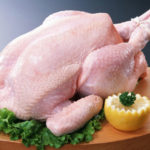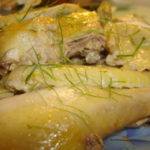How to choose good chicken
When buying chicken, choosing the right chicken is a top priority. For live chickens, the most important thing is to choose healthy chickens. Signs of a healthy chicken can be determined by the following indicators: shiny feathers, bright feathers, firm body, large tongue scales, and bright eyes.
For processed chickens, look for chickens with naturally light yellow skin and even thin skin all over the body. When checking the chicken meat, consider the firmness of the meat, small float and golden fat that is not accumulated much in the neck and thigh area.
Avoid choosing industrially processed chickens as they often tend to be soft, not crispy, and lack good taste. To ensure food quality, prioritize choosing native chickens or free-range chickens.
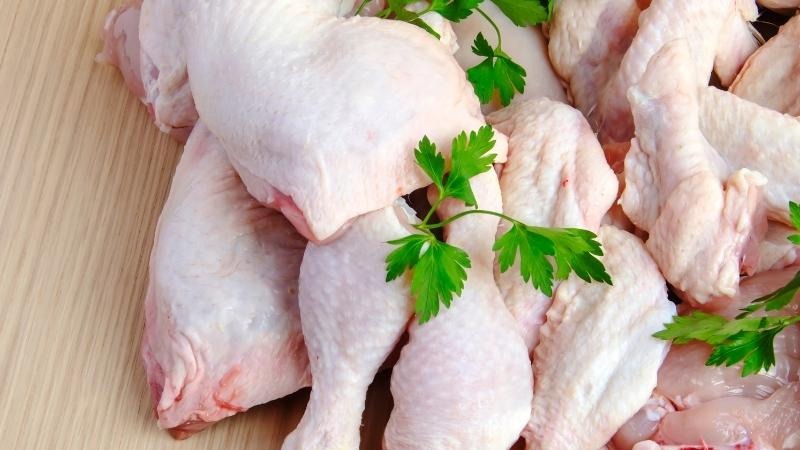
Chicken preparation
After buying the chicken, the first step is to clean the chicken and rub salt evenly on the surface, then rinse it thoroughly to ensure cleanliness. If you plan to use the chicken for a meal, choose a female chicken. Female chickens usually have small bones, white meat, bright yellow skin, sweet taste, and pleasant aroma…
After cleaning the chicken, remove the fat leaves in the abdomen and neck of the chicken for later use, especially for frying and collecting chicken fat…
Next, put the chicken in a pot to boil, making sure there is enough water to soak the chicken. Add dried onions, shallots, or root onions to the pot when the chicken is boiling (if you want to cook chicken soup, you can also add a few slices of ginger).
Note that if you plan to use the chicken broth for cooking soup, limit adding ginger to the broth, as ginger can affect the taste of other vegetables when cooked together.
How to boil delicious chicken
Start by adding 2 tablespoons of salt to the pot, ensuring that the water has a taste like when cooking soup. Place the pot on the stove and simmer over medium heat. When the water boils, reduce the heat to low and let the pot simmer for 10 to 20 minutes depending on the size of the chicken. Then, turn off the stove.
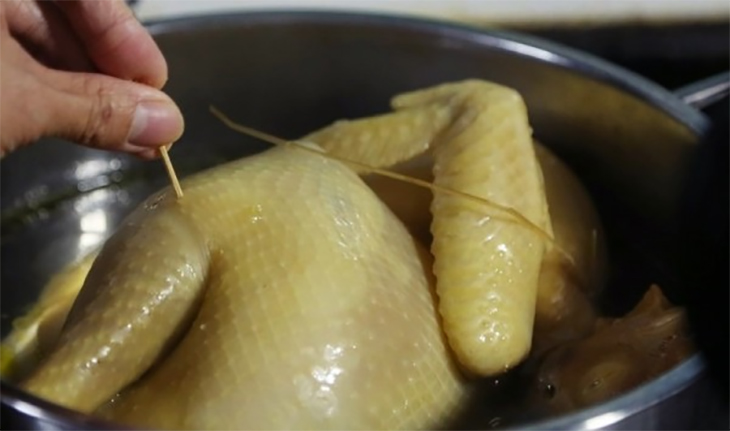
Before continuing, soak the chicken in the pot for about 30 minutes. Then, rinse the chicken under cold water to make the chicken meat crispy and delicious. Remove any residue and dirt from the chicken meat during the rinsing process and let the chicken meat drain.
While the chicken is being boiled, you can separate the fat from the chicken’s belly and neck for later use. Boil the chicken fat in a pan and flip it. Make sure to keep a safe distance when first placing the fat in the pan to avoid splattering oil. When the fat is melting, reduce the heat to low to prevent the fat from burning.
How to boil chicken to have shiny and attractive skin
Start by taking about 20 – 30ml of water fat from the chicken after frying and mix it with turmeric. This is a secret to make the chicken skin shiny and attractive after boiling.
If using fresh turmeric, finely chop the turmeric and mix it with the chicken fat in the pan. Cook for about 30 seconds to 1 minute, then turn off the stove and use this fat to brush onto the chicken.
If using turmeric powder, pour the powder into a small cup or bowl, then pour hot water fat from the pan into it and stir well. Let the turmeric fat settle and steep, do not heat it too hot to avoid a strong turmeric smell.
After the fat has settled, brush this layer of fat onto the chicken. This process helps the chicken skin have a beautiful yellow color without causing an imbalance in taste.
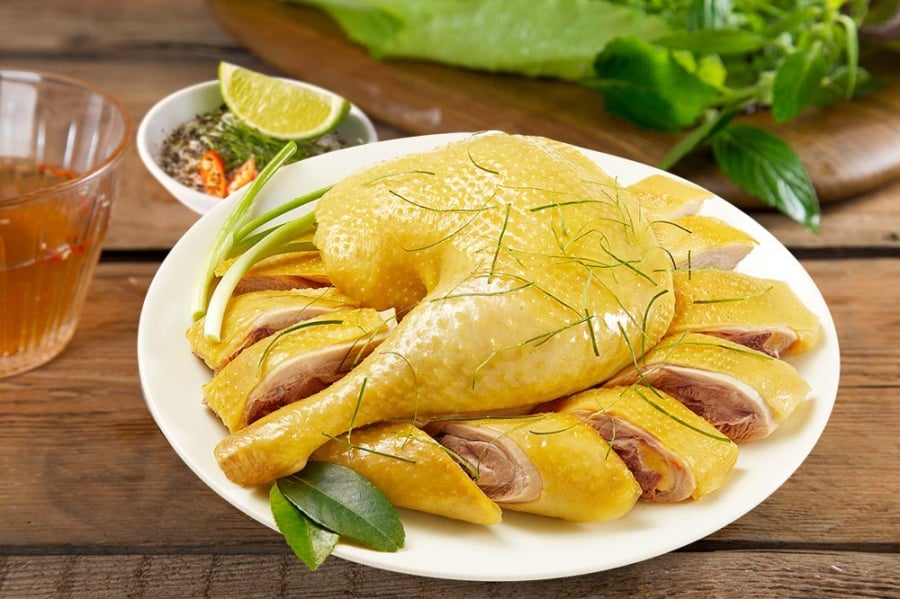
To make the chicken meat look beautiful, place the chicken in the refrigerator for about 30 minutes – 1 hour before cutting. Excess chicken fat after boiling can also be used, such as for stir-frying vegetables or cooking delicious chicken rice.
To have a bright and smooth boiled chicken skin, soak the chicken in boiling water or cold water immediately after boiling. Wait for the chicken to completely cool before placing it on a plate. Otherwise, the chicken skin may become dry and less attractive.
Finally, to make the chicken meat more flavorful, you can crush a piece of turmeric, squeeze out the juice, and mix it with the chicken fat. Spread this turmeric water mixture onto the chicken. The result will be a boiled chicken with shiny, smooth, and attractive skin.
9 Delicious Recipes for Making the Best Fried Chicken
 Delicious Recipes for Making the Best Fried Chicken’>
Delicious Recipes for Making the Best Fried Chicken’>Discover the secrets of fried chicken perfection! If you’ve been dreaming of the perfect fried chicken dish, this is the guide for you. We’ve compiled our top tips so you can make restaurant-quality fried chicken in the comfort of your own home. Keep reading to learn more!


























